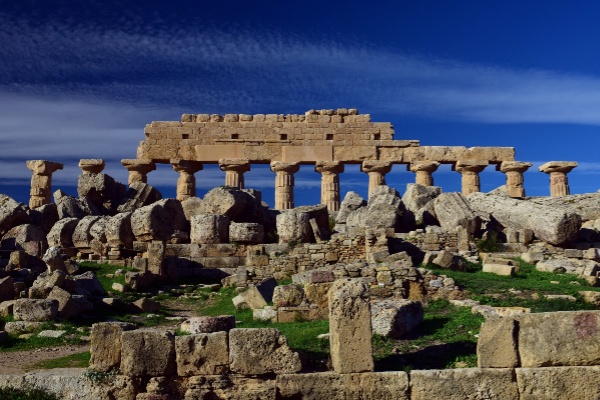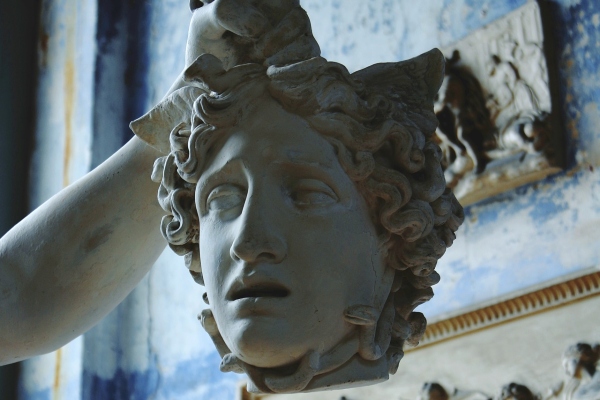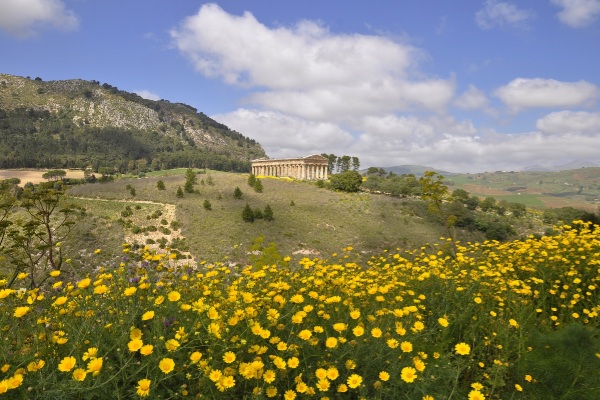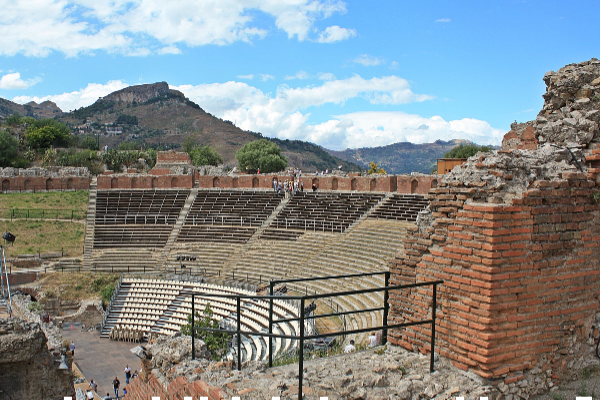A Guide to the Greek Temples in Sicily
Tourists flock to Sicily for pristine beaches, charming fishing villages and the savory taste of Sicilian cuisine, but above all else, the Greek Temples.
Scattered across the Mediterranean island stand these impressive relics of the past. They are sun kissed and weathered from years gone by, but they still stand tall as they represent the gateway into a past civilization that helped lay the roots of Italy, Greece and the rest of the western world. These Greek Temples are not only archaeological marvels, but also architectural, cultural and historical fossils that make Sicily one of the best places in the world to peer into the past of Ancient Greece. From the Valley of the Temples to the Temple of Apollo, Sicily’s Greek Temples are as much a part of the soul of this country as the Renaissance, Leonardo da Vinci and pasta. They will forever be sewn into the fabric of the island.
And this is an encompassing guide to help you time travel through the history of the Greek Temples on your Sicilian holiday.
History
Sicily’s dense collection of temples and artifacts originates all the way back to the 7th and 8th centuries BC when Greek settlers were just beginning to colonize islands in the Mediterranean and Black Sea. These settlers found the modern-day cities of Syracuse, Selinunte, Messina and Agrigento. And with them they brought little pieces of mainland Greece along with them, including their religious beliefs and wealth. And as they planted roots, these extravagant worshipping sanctuaries and statues for various gods and goddesses bloomed across what is presently Sicily, a well-preserved graveyard for Ancient Greece.
While the once vibrant and grandiose structures have faded with time, the remaining presence of these Greek Temples pay ode to the prosperity, wealth and intricate art of this time period that sets them apart from other ancient buildings, artifacts and findings across the world.

Style
When catching these fossils in the sunlight, you can see the attention to detail, intricate accents and doric style through every twisting column and dilapidated step.
The Doric style originated in the south of modern Greece, near Peloponnese, where Greek temple architecture grew out of previous woodwork and other craftsmanships. It’s considered one of the five orders of classical architecture that grew in popularity during the era of Ancient Greece. And is also known as a detail of neoclassical style buildings that you can now find across the world from Washington DC to London.
This Doric style is considered to be simple, calculated and rigid in character. It also is sometimes described as male in design, as opposed to the more female Ionic style used more so in eastern architecture. It’s most defining feature is the columns that so many ancient temples dawn throughout their structure.
Greek Temples
Temple of Apollo – Syracuse
The remains of the Temple of Apollo hail from a time well before 550 BC, and it’s one of the oldest Greek temples in all of Sicily. You can find it in the heart of Syracuse’s old town, near the Temple of Athena. Although only partially preserved, the Temple of Apollo’s resilience is a modern day architectural and historical miracle. Especially as time went on, it wore many hats, and changed according to the time period. From Christian basilica to mosque, and then back to Christian church, the Temple of Apollo has withstood change, religion and time. And you can see this through the still erect thick columns, and the clear inscription on the front steps that gives credit to Kleomenes and Epikles as the creators of this doric style temple. While you cannot get close to the weathered remains you can view it from afar behind a set of railings.
Temple of Athena – Syracuse
And while you’re exploring the remains of Apollo’s Temple, you have to observe the nearby temple dedicated to Athena, goddess of war, wisdom and courage. It’s no surprise this impressive preserved temple bears the same name as one of the most resilient and strong Greek mythical figures in history. Temple of Athena was created under the tyrannical leadership of Gelon after he defeated the Carthaginians in 480 BC. Similar to the Temple of Apollo, this looming structure is an ode to the Doric style with a simple design born from limestone and marble. And the Temple of Athena is in such good shape that it is still a place of worship for Sicilians. To this day it looms over the city of Syracuse exuding pride as Syracuse’s Roman Catholic cathedral.

Valley of the Temples – Agrigento
If you go anywhere to marvel over the monoliths of Sicily, then Valley of the Temples needs to be your destination. Perched above the city of Agrigento, the Valley of the Temples is an open-air museum clustered with temples and ancient artifacts. During the peak of Ancient Greece, Agrigento was a wealthy and lavish city showing off it’s deep pockets and dedication to the gods with grand temples and statues. Now it looms over Agrigento, charming the city below and all who wander through its great expanse. Here you can find the Temple of Concordia, Temple of Hera, Temple of Olympian Zeus, Temple of Asclepius, Temple of Castor and Pollux, Temple of Heracles and the Temple of Hephaestus, among other sites and attractions scattered throughout.
By standards of preservation, the Temple of Concordia stands taller than the rest. It was built in 425 BC, and one of the last Greek temples to find a home in Sicily. It’s known as one of the best-preserved Greek temples in the entire world as only it’s roof is missing, and displays 78 columns that measure upwards of six meters. You can see the intact classical architecture through the inner shrine, pediments and surviving outer colonnades that are on display.
The Valley of the Temples is a portal through time to an affluent society reaping the benefits of Ancient Greece and the mercy of the gods.
Selinunte Temples – Selinunte
Similarly to the Valley of the Temples, but less well known and less well preserved, the Selinunte Temples lie in the western reaches of Sicily creating exactly what you would imagine a graveyard of Greek temples to look like – weathered and cracked, but mysteriously intriguing.
Before history wore away at these massive structures, there were at least seven temples residing over Selinunte during 550 BC. On the hilltop overlooking Selinunte, you will find the remains of four different temples from this era. And you will find the shadows of the other three temples near the city’s harbour. Near the harbor is where Selinunte’s most popular temple lies.
Near the harbour is the most intact temple, also known as the Temple of Hera, named in honor of Zeus’ wife and the goddess of marriage. This is by far the most intact temple standing in Selinunte, thanks to modern day reconstruction efforts. The Temple of Hera is a masterpiece representing the classical style most associated with 5th-century BC architecture.
Temple of Segesta – Segesta
You can find Segesta and its sole temple in the northwestern corner of Sicily where locals and tourists alike flock to marvel over its impressive stance amongst a breathtakingly beautiful backdrop. The Segesta Temple stands tall amidst a cloud of greenery and creates the idyllic attraction for visitors. Initially it seems out of place, but then upon further inspection you can see how the natural world and ancient history intertwined throughout the centuries to create a bucket list worthy scene. But what’s even more intriguing about this monument is its history.
The city of Segesta was founded by Elymians, a Sicilian tribe, rather than through Greek colonisation like the other cities and temples mentioned. But just as you can feel the influence of Greek culture today in Sicily, the Elymians were heavily impacted and attracted to Greek architecture. And so arose the phenomenon of this region in the back end of the 5th century BC when the Elymians built a Doric-style temple to lay guard over their new civilization.
What’s even more intriguing is that the construction was never actually completed, although it is hard to tell as it still looms tall today.

Beyond the Temples
As you’re wandering from temple to temple and taking in the immense history that radiates from these impressive fossils under the Sicilian sun, there’s a high probability that you won’t want to leave your journey through time. So here are some other attractions for all of the time travelers to get lost in:
Syracuse Archaeological Site
While you’re in Syracuse and discovering the Temple of Apollo for yourself, be sure to spend some more time at the Syracuse Archaeological Site that dates this city back to the 8th century BC. Here you will find the famous Ancient Greek theatre, a Roman amphitheatre, an altar to Sicilian King Hieron II, ancient quarries and the Castle of Euryalus. Much of Sicily’s rich history comes from the roots of Syracuse, and spending time here is not only a walk-through time, but also another way to connect with the Sicilian culture.
Taormina Amphitheatre
A guide to Sicily without the mention of visiting Taormina is an injustice, and that’s why you should not only travel to Taormina, but also spend an afternoon exploring the Taormina Amphitheatre or even attending a show. This seemingly prehistoric structure was built by Greek architects in the 3rd century BC. It was then rebuilt and modified by the Romans. Imagine being able to touch the history of the Ancient Greeks, whilst looking out to a deep blue horizon off the coast – visiting the Taormina Amphitheatre doesn’t get any more idyllic.

Piazza Armerina
Although much of the ancient ruins throughout Sicily honor the hard work of Ancient Greece, there is much to be seen of the Ancient Romans as well, including the mosaics that can be found at the Villa Romana del Casale at Piazza Armerina. Here you will find stunning artistry and the largest collection of Ancient Roman mosaics that go all the way back to the 4th and 5th centuries AD. You will get lost wandering through each mosaic’s picturesque story.
Other Tips
In order to see all of the things and experience as much of the Greek Temples in Sicily, here are some helpful hints for your holiday:
Although Sicily is an island, it is a large island with a lot of territory to cover, especially if you want to see all of the ancient ruins that populate this Mediterranean staple. So, to optimize your time and your ability to see as much as you can, it would be best to rent a car for your Sicilian excursion.
The best time to visit these Greek temples are during the shoulder seasons to avoid the crowds and stifling weather that sweeps through Sicily from June to August. Although if you find yourself on holiday during the summer months, then you can also avoid the hassle if you spend your early mornings following the footprints of the past. These temples are often exposed to the harmful gaze of the sun’s rays, and so will you no matter the time of year. Be sure to pack sunscreen or a hat to avoid having to cut your adventure short because of sunburn or exhaustion. Also, don’t forget snacks to avoid spending steep fees on tourist trap restaurants! Be prepared to pay small admissions to see and explore the archaeological sites of most of the ruins and temples. Although the cost is well worth the views.
To discover more about Sicily and the rest of your Italian holiday, check out Italian Breaks for where to go, where to stay and what to do.


